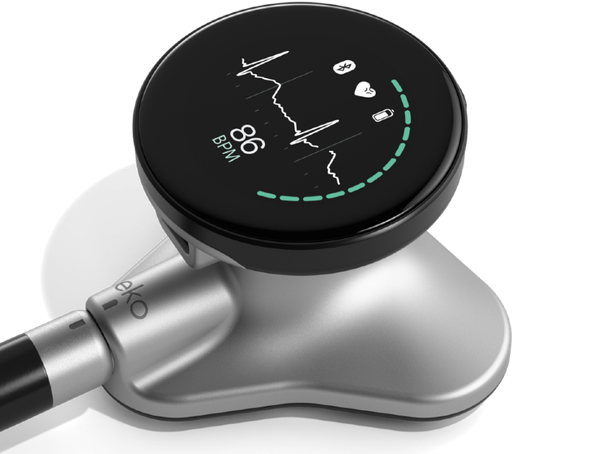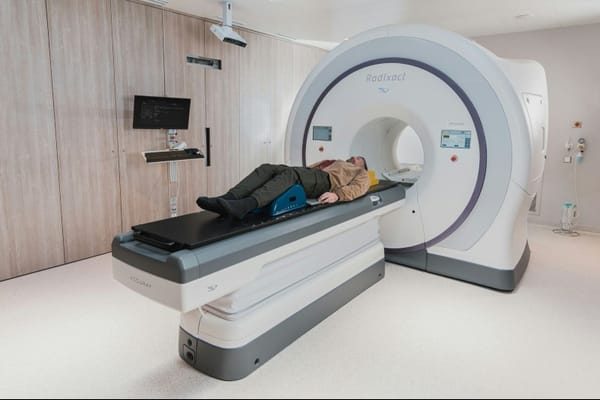In a groundbreaking development at the intersection of artificial intelligence and neurology, researchers have unveiled a powerful new tool in the fight against dementia. By harnessing the capabilities of AI, scientists have significantly enhanced the diagnostic potential of electroencephalograms (EEGs), enabling neurologists to identify signs of dementia with unprecedented speed and precision. This innovative approach not only promises to revolutionize early detection but also opens new avenues for understanding and potentially treating various forms of cognitive decline.
The Power of AI-Enhanced EEGs
Electroencephalograms have long been a staple in neurological diagnostics, providing valuable insights into brain activity through the measurement of electrical signals. However, the traditional interpretation of EEG data has been a time-consuming and complex process, often requiring extensive expertise to identify subtle abnormalities. The integration of artificial intelligence into this field marks a significant leap forward, offering a more efficient and accurate method of analysis.
AI's Role in EEG Interpretation
The AI system developed for this purpose has been trained on vast datasets of EEG recordings, learning to recognize patterns and anomalies associated with various forms of dementia. This machine learning approach allows the AI to process and analyze EEG data at a speed and level of detail far beyond human capabilities. By rapidly sifting through the complex waveforms of brain activity, the AI can highlight areas of concern for neurologists to review, effectively acting as a highly sophisticated screening tool.
Enhancing Diagnostic Accuracy
One of the most significant advantages of this AI-enhanced approach is its ability to detect subtle changes in brain activity that might be overlooked in traditional EEG analysis. These minute alterations can be early indicators of cognitive decline, potentially allowing for diagnosis of dementia at much earlier stages than previously possible. The increased sensitivity and specificity of AI-assisted EEG analysis not only improves diagnostic accuracy but also helps in differentiating between various types of dementia, which can be crucial for determining the most appropriate treatment strategies.
Early Detection and Its Impact
The ability to detect dementia at its earliest stages is a game-changer in the field of neurology. Early diagnosis allows for timely intervention, which can significantly impact the course of the disease and improve quality of life for patients and their families.
Benefits of Early Diagnosis
- Improved Treatment Outcomes: Early detection allows for the implementation of treatments and interventions when they are most effective, potentially slowing the progression of cognitive decline.
- Enhanced Patient Care Planning: With early diagnosis, patients and their families can better prepare for the future, making informed decisions about care, legal matters, and lifestyle adjustments.
- Increased Research Opportunities: Early identification of dementia cases can contribute to more comprehensive and longitudinal studies, potentially leading to breakthroughs in understanding and treating these conditions.
Reducing Diagnostic Delays
One of the persistent challenges in dementia care has been the significant delay between the onset of symptoms and formal diagnosis. This AI-enhanced EEG technology has the potential to dramatically reduce this gap, enabling neurologists to identify and address cognitive decline much earlier in its progression. By shortening the diagnostic process, patients can access appropriate care and support services sooner, potentially improving their long-term outcomes.
The Technology Behind AI-Enhanced EEGs
Understanding the technological underpinnings of this innovative approach is crucial for appreciating its potential impact on neurological practice.
Machine Learning Algorithms
At the heart of the AI system are sophisticated machine learning algorithms, particularly deep learning neural networks. These algorithms are trained on large datasets of EEG recordings from both healthy individuals and those with various forms of dementia. Through this training process, the AI learns to recognize subtle patterns and anomalies in brain activity that are indicative of cognitive decline.
Feature Extraction and Analysis
The AI system employs advanced feature extraction techniques to identify relevant characteristics in the EEG data. These features might include specific frequency bands, amplitude changes, or more complex patterns of brain activity. By analyzing these features in combination, the AI can provide a comprehensive assessment of the EEG data, highlighting areas that warrant further investigation by neurologists.
Integration with Clinical Data
To enhance its diagnostic capabilities, the AI system is designed to integrate EEG analysis with other relevant clinical data. This might include patient history, cognitive test scores, and imaging results. By considering this broader context, the AI can provide more nuanced and personalized assessments, further improving its diagnostic accuracy.
Clinical Applications and Implementation
The integration of AI-enhanced EEG analysis into clinical practice represents a significant shift in neurological diagnostics. However, its successful implementation requires careful consideration of various factors.
Training and Adaptation for Neurologists
While the AI system is designed to augment rather than replace human expertise, neurologists will need to adapt their practices to effectively utilize this new tool. This may involve training in interpreting AI-generated reports and understanding the strengths and limitations of the technology. Institutions implementing this technology should prioritize comprehensive training programs to ensure that neurologists can leverage the full potential of AI-enhanced EEGs.
Workflow Integration
Incorporating AI-enhanced EEG analysis into existing clinical workflows presents both challenges and opportunities. On one hand, the rapid processing of EEG data by AI can significantly streamline diagnostic procedures, potentially allowing neurologists to see more patients or dedicate more time to complex cases. On the other hand, healthcare systems will need to invest in the necessary infrastructure and establish protocols for seamlessly integrating AI analysis into their existing processes.
Ethical Considerations and Patient Communication
As with any new medical technology, the use of AI in dementia diagnosis raises important ethical considerations. Healthcare providers must be transparent with patients about the role of AI in their diagnosis and ensure that patients understand both the benefits and limitations of this approach. Additionally, safeguards must be in place to protect patient privacy and ensure the responsible use of AI-generated health data.
Future Directions and Potential Impacts
The development of AI-enhanced EEG analysis for dementia detection is just the beginning of what promises to be a transformative era in neurology and cognitive health.
Expanding to Other Neurological Conditions
While the current focus is on dementia detection, the principles underlying this technology could potentially be applied to a wide range of neurological conditions. Future research may explore the use of AI-enhanced EEGs in diagnosing and monitoring conditions such as epilepsy, traumatic brain injury, or neurodevelopmental disorders.
Personalized Treatment Planning
As the AI system accumulates more data and refines its analytical capabilities, it could potentially assist in developing personalized treatment plans for patients with dementia. By identifying specific patterns of brain activity associated with different subtypes of dementia or predicting individual responses to various interventions, the AI could help neurologists tailor treatments more effectively to each patient's needs.
Advancing Neuroscience Research
The insights gained from large-scale analysis of EEG data through AI could significantly contribute to our understanding of brain function and cognitive decline. This wealth of data and analytical power may lead to new discoveries about the underlying mechanisms of dementia and potentially identify new targets for therapeutic interventions.
Challenges and Limitations
Despite its promising potential, the implementation of AI-enhanced EEG analysis for dementia detection is not without challenges.
Data Quality and Standardization
The effectiveness of AI algorithms heavily depends on the quality and consistency of the data used for training and analysis. Ensuring standardized EEG recording protocols across different healthcare settings and maintaining high-quality data collection practices will be crucial for the widespread adoption and reliability of this technology.
Interpretability and Explainability
One of the ongoing challenges in AI-based medical diagnostics is the "black box" nature of some machine learning algorithms. Efforts must be made to develop AI systems that can not only provide accurate diagnoses but also offer clear explanations for their conclusions, allowing neurologists to understand and validate the AI's reasoning.
Regulatory and Validation Hurdles
As with any new medical technology, AI-enhanced EEG analysis will need to undergo rigorous testing and validation before widespread clinical adoption. Regulatory bodies will need to develop frameworks for evaluating and approving AI-based diagnostic tools, ensuring their safety and efficacy.
Conclusion
The integration of artificial intelligence with EEG analysis represents a significant leap forward in the field of neurology, particularly in the early detection and diagnosis of dementia. By enhancing the speed and accuracy of EEG interpretation, this technology promises to revolutionize how we approach cognitive health, offering hope for earlier interventions and improved patient outcomes.
As we stand on the brink of this new era in neurological diagnostics, it is clear that the potential benefits are immense. From enabling earlier detection and more precise diagnosis to opening new avenues for research and personalized treatment, AI-enhanced EEGs have the power to transform our approach to dementia care.
However, realizing this potential will require ongoing collaboration between researchers, clinicians, and technologists. As we continue to refine and expand this technology, we must remain mindful of the ethical implications and work to ensure that its benefits are accessible to all who need them.
The journey towards fully integrating AI into neurological practice is just beginning, but the promise it holds for improving the lives of millions affected by dementia is truly remarkable. As we move forward, the combination of human expertise and artificial intelligence in neurology may well prove to be one of the most significant advancements in our ongoing fight against cognitive decline.















Member discussion